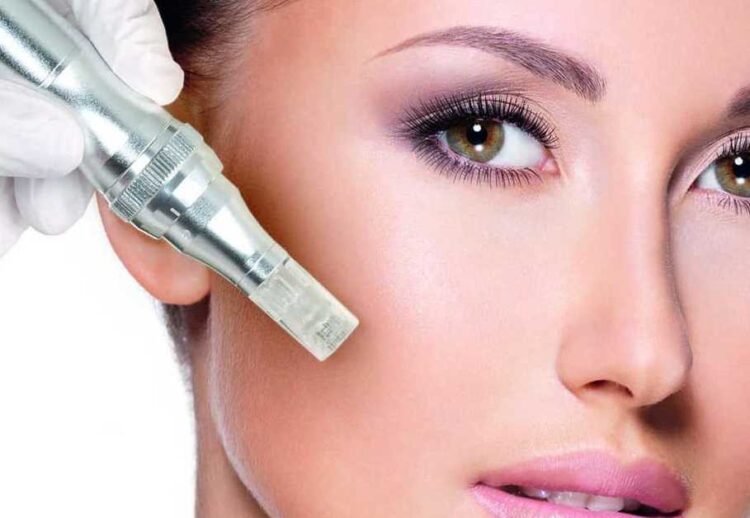Skin rejuvenation is a significant focus in the pursuit of maintaining youthful, vibrant and healthy skin. Among various skin therapies, microneedling has emerged as a potent and accessible treatment that stimulates the natural healing processes of the skin, encouraging the production of collagen and elastin. With advancements in dermatological tools, microneedling at home has become an increasingly popular method for individuals looking to enhance their skin’s appearance from the comfort of their own homes. This ultimate guide will explore the essentials of personal skin rejuvenation through microneedling.
Understanding Microneedling
Microneedling is a minimally invasive skin-rejuvenation procedure that involves the use of a device with fine needles, which creates tiny punctures in the top layer of the skin. These controlled micro-injuries trigger the body’s natural wound healing processes, resulting in cell turnover and increased collagen and elastin production. Consequently, this process helps in reducing the appearance of fine lines, wrinkles, scars, and improves overall skin texture.
The Benefits of Microneedling at Home
While professional treatments are widely available, the option to perform microneedling at home presents several advantages. It offers convenience, as it can be done on one’s own schedule without the need for appointments. Home treatments are also more cost-effective compared to the cumulative expenses of professional visits. Furthermore, with the right equipment and careful adherence to hygiene and safety protocols, at-home microneedling can be an effective alternative to in-clinic sessions.
Choosing the Right Tools
One critical aspect of microneedling at home is the selection of appropriate tools. It is essential to invest in devices that are specifically designed for home use, featuring safe needle lengths and sterilisation capabilities. Quality microneedling pens, such as those offered by reputable companies, are often accompanied by user manuals or guides to assist with proper technique and care to ensure safety and effectiveness.
Preparing for Microneedling at Home
Before commencing any microneedling treatment at home, it is imperative to thoroughly cleanse and prep the skin to remove any makeup, oils, and impurities. This process helps to minimize the risk of infections and maximises the treatment’s effectiveness. Some pre-treatment products can also be used to numb the skin, making the procedure more comfortable.
Performing the Procedure
When performing microneedling at home, it is crucial to follow a systematic approach. The skin should be divided into sections, and the microneedling device should be gently glided over the skin in multiple directions to ensure even coverage. Care should be taken to avoid over-treating any area and to be particularly gentle around sensitive regions like the under-eye area.
Post-Treatment Care
After completing the microneedling session, applying a soothing serum or hyaluronic acid can aid in calming the skin and enhancing the rejuvenation process. Post-treatment care is critical as it helps in the recovery of the skin, ensuring the best possible results while minimising any potential irritation or redness.
Frequency of Treatments
The frequency of at-home microneedling sessions depends largely on individual skin goals and the specific concerns being targeted. However, for general maintenance, treatments can typically be spaced a few weeks apart. It’s essential to allow the skin ample time to heal between sessions to prevent any adverse effects.
Combining Microneedling with Other Skincare Treatments
Incorporating microneedling into a broader skincare regimen can enhance overall results. For instance, using products with active ingredients such as vitamin C or retinol can further promote skin health and rejuvenation. Nevertheless, it is vital to wait until the skin has fully healed from microneedling before applying such products.
Risks and Considerations
Microneedling at home is generally considered safe when executed correctly with sterile equipment. However, it is not suitable for everyone. Individuals with active skin infections, chronic skin conditions, or those prone to keloid scarring should consult with a dermatologist before starting at-home treatments. Additionally, always perform a patch test to rule out any adverse reactions to the procedure.
Monitoring Progress and Results
Tracking the changes in one’s skin is an essential part of any skincare routine. With microneedling, improvements in skin texture and elasticity may become noticeable after several treatments. It is important to document the progress with photos taken under consistent lighting to objectively assess effectiveness.
Finding High-Quality Microneedling Resources
To ensure optimal results and safety during at-home treatments, obtaining reliable information and equipment is crucial. Trustworthy sources can provide guidance, support, and quality products to help individuals achieve their skincare goals.
In conclusion, microneedling at home presents a convenient and cost-effective way to achieve personal skin rejuvenation. With the right tools, proper technique, and vigilant aftercare, individuals can safely and effectively improve their skin’s health and appearance. Always remember that when it comes to at-home treatments, patience and consistency are key to unlocking youthful, glowing skin.











